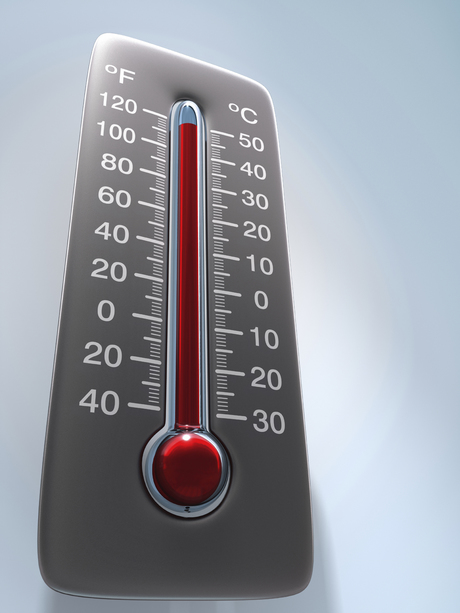Redefining temperature

Australian scientists have contributed to the worldwide effort of redefining the international unit of temperature: the kelvin. By producing a precision laser device, they have come up with a new way to determine Boltzmann’s constant, a number which relates the motion of individual atoms to their temperature.
As explained by project leader Professor Andre Luiten, director of the University of Adelaide’s Institute for Photonics and Advanced Sensing (IPAS), temperature can only be measured accurately at a handful of locations around the globe. Conducting their experiments at IPAS, the researchers used lasers to measure the speed of individual atoms moving in a gas.
“An atom sitting at rest will absorb light of a particular frequency or colour — if it is moving towards you or away from you, then the absorbed light is very slightly changed because of something called the Doppler effect,” said Professor Luiten. “This is exactly the same effect that makes a police siren sound different depending on whether the car is moving towards you or away. We use a pure laser to measure these changes in light absorption, from which we can infer the speeds of the atoms and the temperature of the gas.”
What the team didn’t expect to find was that the light had an apparent effect on the atoms themselves: the measurement itself ends up changing the result. One of the breakthroughs of the project was to develop an explanation of how this happened and ensuring that it didn’t affect the result.
The researchers’ breakthrough, published in the journal Nature Communications, means any laboratory in the world with appropriate skills and equipment could accurately measure temperature. Further development could deliver this capability to industry — something never before possible.
“Traditionally, scientists kept a set of special clocks, rules and standard masses to define units such as the second, metre and kilogram,” said Associate Professor Tom Stace, from the ARC Centre for Engineered Quantum Systems at The University of Queensland. “Over the last 50 years we have been getting rid of these standards and replacing them with universal quantities, such as the speed of light or the frequency at which certain atoms vibrate.
“This program is completed for time, electrical quantities and length, but mass and temperature still make use of special objects. In the case of temperature, it is based on the freezing point of a very special type of water to define the kelvin, which makes it difficult for all laboratories around the world to agree about temperature.
“Our work will bring a universally agreed temperature scale to the globe. As with any upgrade, this one will be deemed successful if people hardly notice the transition on a day-to-day basis. But for those at the cutting edge — whether developing new metal alloys at very high temperatures or measuring the temperatures of the coldest substances, the need for absolute temperature is critical.”
“Creating agreed definitions of quantities is crucial for the industry and economy of all advanced technological societies,” added Professor Eric May, from the Centre for Energy at The University of Western Australia.
Smartphone motion sensors used to detect heart failure
There is a non-invasive technique called gyrocardiography for measuring cardiac vibrations on the...
Fluorescent sensors 'light up' misfolded proteins in the brain
Researchers focused on developing a versatile fluorescent sensor array for amyloids to monitor...
Gravimetric sensors to improve greenhouse gas detection
The sensors can be used to record greenhouse gases such as carbon dioxide, methane, water vapour,...







